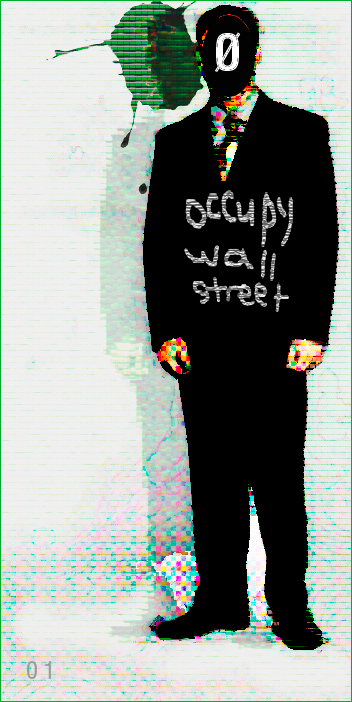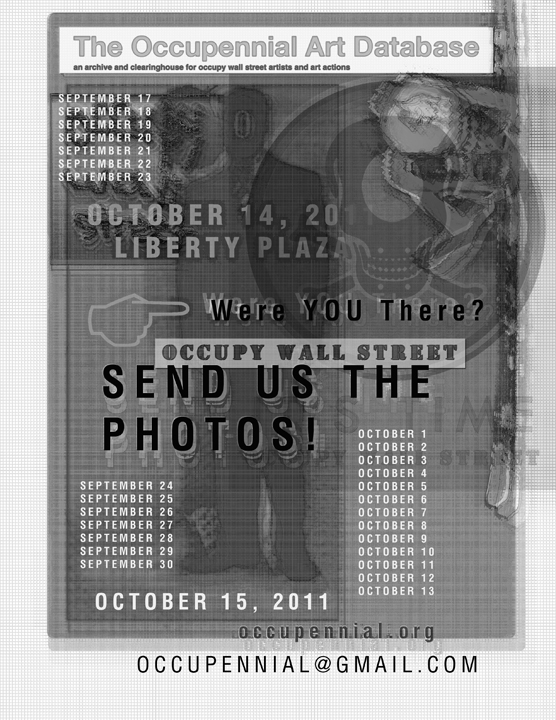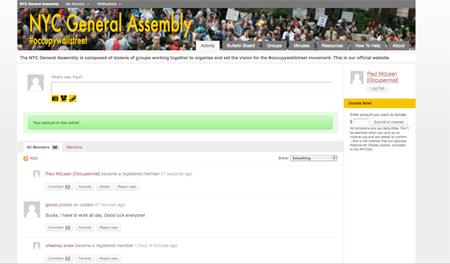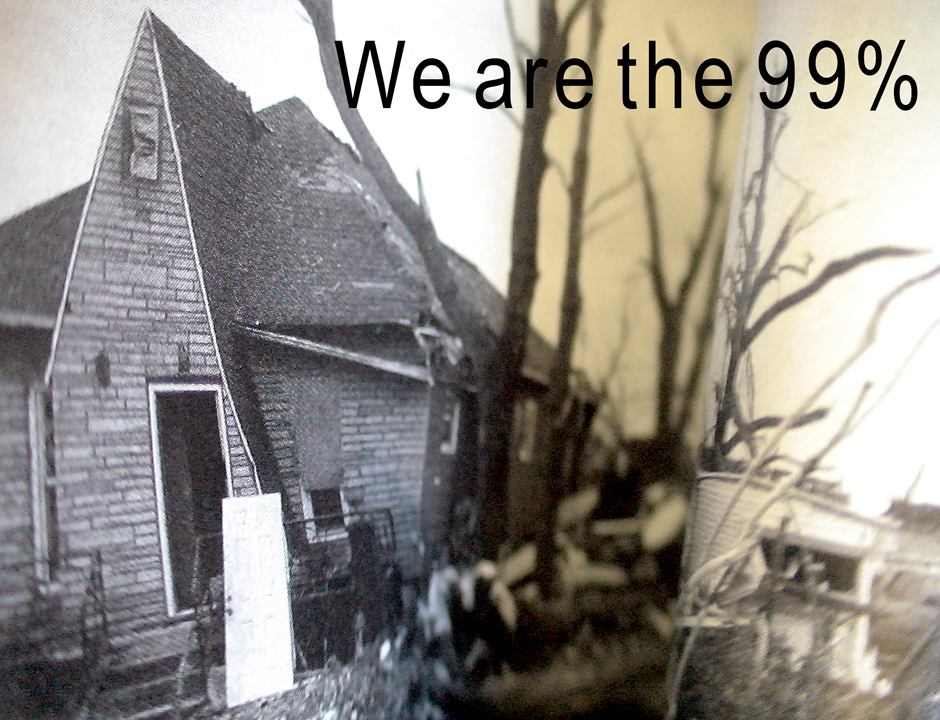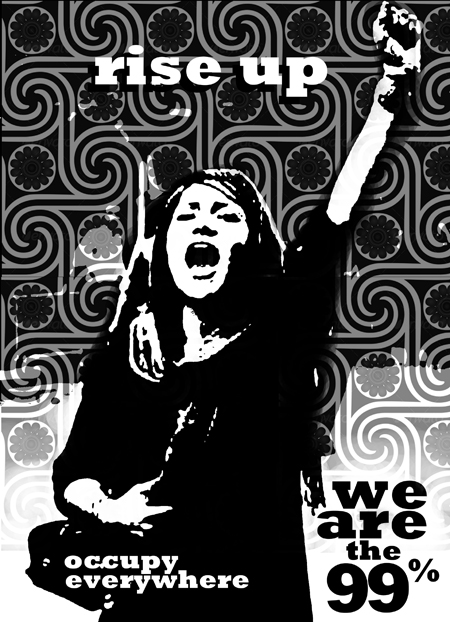The Occupy with Art blog provides updates on projects in progress, opinion articles about art-related issues and OWS, useful tools built by artists for the movement, new features on the website, and requests for assistance. To submit a post, contact us at occupationalartschool(at)gmail(dot)com .
CALLING OCCUPANT PHOTOGRAPHERS!
 Saturday, October 15, 2011 at 12:01PM
Saturday, October 15, 2011 at 12:01PM CLICK ON THE IMAGE TO LEARN HOW TO SUBMIT YOUR PHOTOS TO THE OCCUPENNIAL OCCUPATION PHOTO ARCHIVE.
THIS GRAPHIC IS FREE FOR DOWNLOAD IN THE OCCU-GANDA NEXUS.
 POSTERS,
POSTERS,  occupennial,
occupennial,  occupy wall street in
occupy wall street in  graphics,
graphics,  participation,
participation,  submissions
submissions The New NYC General Assembly Site
 Saturday, October 15, 2011 at 10:57AM
Saturday, October 15, 2011 at 10:57AM  nycga,
nycga,  occupy wall street,
occupy wall street,  website in
website in  websites
websites A Note from Jason Flores-Williams
 Saturday, October 15, 2011 at 10:40AM
Saturday, October 15, 2011 at 10:40AM ....I'll never forget yesterday at OWS long as I live. Such a privilege to be around it. For me, nothing shows how things could be versus how they are, than to spend a day in the cool humanness of Zucotti Park, then to walk a block over to Wall Street and feel like the guy next to you wants to stick a knife in your neck. For what..I don't know. Maybe the wrong shoes.
 occupennial,
occupennial,  occupy wall street,
occupy wall street,  poetry in
poetry in  readings
readings Paintings by Alex Powers
 Saturday, October 15, 2011 at 10:31AM
Saturday, October 15, 2011 at 10:31AM Occupy Wall Street,Attached are 5 JPegs of paintings that express what OWS is doing politically. Use the JPegs in any way that is helpful. Maybe post them on your website. I will donate the original paintings if you can sell/auction them. I do not want anything for myself. I am not looking for publicity. I want to help. There are 10 paintings total. I will send them in 3 emails. I have other paintings with similar expressions if you could use more.I admire what you are doing. It is an issue that has been dear to my heart for decades.Alex PowersMyrtle Beach, SC
 Submissions,
Submissions,  occupennial,
occupennial,  occupy wall street in
occupy wall street in  art at #ows,
art at #ows,  paintings
paintings Occupy Museums!
 Wednesday, October 12, 2011 at 03:26PM
Wednesday, October 12, 2011 at 03:26PM On Wed, Oct 12, 2011 at 1:15 PM, Noah Fischer <fischer.noah@gmail.com> wrote:
Occupy Museums!
Let’s dance in front of the Cannons
and tell the cultural pyramids:
You are NOT our MoMA!
I know that many people have been thinking in this direction and I’d like to add my voice. It just might be time to band together And do some museum hopping! We'll state loud and clear and publically that the game is up: we see through the pyramid schemes that museums have set up whereby the 1% sit on boards and presume to speak with cultural authority while increasing the profit margins of their private collections. They have disempowering the hundreds of thousands of living artists - the 99% through rarified gatekeeping that has directly equated art with Wall Street capital- with all of the same shady business and BS hierarchy!!!
As long as we accept the authority of these oppressive cannons, I’m not sure we can move forward with new aesthetics and movements: art that is truly by and for everyone! Art that isn’t rehashed and boring and pre-packaged and dead on arrival! Art that is alive! Art that is powerful! I think it would be wonderful to give the museums notice of the impending paradigm shift. Some serious truth to power, playfulness, and mockery is in order!
-Explaining Art to a Dead Museum.
-Reading the GA statement or A & C statement or autonomous statements in front of the Frick, using people’s mic.
-etc etc.
-etc.
There are many museum nights in New York with long lines, which may be fruitful audiences. We can also go inside and play.
So I propose Occupy Museums next week- Thursday afternoon and evening. I’ll bring this up at an A & C meeting beforehand.
A couple Museums to Occupy:
-New Museum: Showcased Dakis Joannou’s personal collection, bumping up auction prices: use and abuse of the whole concept of “public” for personal profits. Dis-gusting!
-Frick Collection: dedicated to a long term PR campaign for the one of the “Worst American CEOs of All time.” Whose draconian policies included murdering workers striking against unhuman working conditions. We say- what the Frick is going on here!
It’s easy to do research on these museums and who is standing behind them:
http://www.moma.org/about/trustees
Noah
 activism,
activism,  interventions,
interventions,  occupennial,
occupennial,  occupy wall street in
occupy wall street in  activism,
activism,  interventions
interventions dOCUMENTA (13) / AND AND AND (w/#OWS)
 Wednesday, October 12, 2011 at 03:22PM
Wednesday, October 12, 2011 at 03:22PM dOCUMENTA (13) GEHE ZUR DEUTSCHEN VERSION
newsletter@documenta.de
AND AND AND / Event 10 / Solidarity with Occupy Wall Street / New
York / Occupation began September 17, 2011 – ongoing
dOCUMENTA (13)
The big island formed a kind of alien territory – you might say that
its chief function was to serve as generator of synthetic desire.
AND AND AND is an artist run initiative, which will use the time
between now and dOCUMENTA (13) in 2012 to consider with individuals
and groups across the world the role art and culture can play today
and the constituent publics or communities which could be addressed.
The series of interventions, situations, and occurrences entitled AND
AND AND are part of dOCUMENTA (13) and will compose a map of emergent
positions, concerns, and possible points of solidarity.
For the tenth event, AND AND AND returns to the United States in
solidarity with the Occupation of Wall Street.
As a part of their effort to interrogate and diversify the mode of
communication of the dOCUMENTA (13) press office, they have asked us
to post below their letter to the General Assembly and Affinity Groups
of Occupy Wall Street.
Date: Occupation Began September 17, 2011 – ongoing
Country: U.S.A.
City: New York
Location: 40° 42'34" N, 74° 00'41" W
Address: Liberty Plaza (For further information contact
projects@andandand.org )
dOCUMENTA (13) is not responsible for the views or factual claims
expressed by the artists and artworks it presents.
www.nycga.cc
www.documenta.de
www.andandand.org
/-/-/-/-/-/-/-/-/-/-/-/-/-/-/-
To the General Assembly and Affinity Groups of Occupy Wall Street,
14 months ago, a group based in New York, on Beaver Street, a few
blocks south of your occupation sought inspiration and new cultural
forms by visiting the US Social Forum. This trip into one of the nodes
of contemporary social movements was not just symbolic. Pulsing
through this journey to Detroit, a site which encapsulates the
apocalypse and abandonment awaiting anyone who believes capitalism and
our planet can both survive this crisis, was a question which asked
where does and how can art reside within social movements.
2011 has brought us into a new era and we have tried to look around
us. Those who believed that change will only come from without have
been shown that even those working inside this machine are ready to
revolt. How better to understand phenomena such as Wikileaks and all
of those who have risked their lives to reveal that at many scales,
the systems we inhabit are corrupt. Then the revolutions in Tunisia
and Egypt were a call that we have truly entered another epoch. And
those who stand against the emancipatory struggles resisting a global
mafia, that has sought to privatize and financialize everything from
our homes to the wheat in our bread, stand against history.
Left to a previous era are the suicides of 'martyrdom' operations
which revealed their impotency (in confronting racism, poverty,
inequality and new enclosures) by only emboldening a worldwide
security state, armed and ready to build new walls and designate any
resistance to its rule as terrorism. This era has brought us the
convergence of bodies that fight not in the name of any afterlife, but
for life here and now. What else could one expect when the basic
subsistence of millions is daily exposed to the fate of a senseless
pseudo-market, which has become the playpen of bloated vampires who go
by names like 'hedge fund manager' 'billionaire investor' or 'chief
executive officer.’
Those same vampires have held up an untenable equation to us:
Privatize gains yet socialize losses.
A revolutionary wild fire has spread from Libya, Syria, Bahrain,
Yemen, Jordan, Occupied Palestine, even to Israel. The sparks have
spread to Portugal, Greece, Spain, back to Greece again and to the
streets of London. Now they have landed in yet another one of the
capitals of capital, maybe THE symbolic capital of this financial
mafia, Wall Street. In all of these sites, we have heard different
variations of ENOUGH.
And you have put a number to this: ‘We are the 99%.’ And you have put
a number on this: the ‘the 1%.’ You have used every means available to
find a language to utter these words in a process that gives potential
meaning to democracy. As opposed to the false oppositions between
parties who vie for the power to govern how the ship should sink or
the train should crash: you are asking to stop the train or bring the
ship to shore. We need to change our coordinates: the numbers don’t
add up, and the equations seem to always miss the most elemental of
things.
Your lack of demands acknowledges the multiplicity of demands and
commands that our imaginaries yield to daily. Your lack of demands
leaves space for a discussion to emerge and for ideas to grow through
a common time. Your lack of demands refuse to recognize that there is
anyone manning the ship other than abstract algorithms and economic
laws which miraculously always seem to benefit only the 1%.
Thus your hand-made placards, your communiqué's, and pamphlets are not
simply a call to a sovereign pleading for new privileges, rights or
protections. They are beacons of hope, of love, of refusal, of
solidarity, poetry for a multitude to construct a common space in one
of the centers of Empire and to rethink what a common horizon could
become. Our forests, our water, our air, our soil, our seas are our
commons. Our labor, our ideas, our words, our relations are our
commons. These cannot belong either to a state or to private
enterprise, as they cannot be contained by any border nor controlled
by any single entity; they are the basic components of life. Yet, what
we have been asked to accept as our common destiny has been toxic debt
and toxic waste.
Joseph Beuys once claimed that everyone is an artist. And Robert
Filliou once asserted that art is that which makes life more
interesting than art. In these and many other terms, we can understand
you as artists. But we would like to add another proposition to these
statements: art can also be that burst of creation which does not
properly belong inside the domain in which it first emerges. And
though we are clear that, what you and the millions behind you and
with you, from Tunis to Cairo from Athens to Madrid, are doing is
politics; we also see these actions as a deterritorialization of the
politics we knew over these last decades.
We have heard of efforts to bring artists to Wall Street in the name
of an Occupenial. While we support all efforts to bring attention and
legitimate your undertaking, we believe that we must not miss this
opportunity to recognize the artists and artistry within this emergent
movement. Art is not outside or separate from this movement, it is
taking place each day you persist to build this common space/time.
We should not abandon or overlook what this moment of history calls
from us. We don't need recognizable artistic names to add legitimacy
to this movement, we need the multitudes, the whatever singularities,
the dark matter, the hackers, the day laborers, the 'service
providers', the precariat, the cognitariat, the caretakers, the
general intelligence that is and has been cultivated across multiple
virtual, material and invisible networks- to translate their specific
know-how and know-what into political action.
How to translate this massive collective and common intelligence into
political action? This has been a critical question of this young
century. The nascent processes taking shape globally, which you are a
part of, are an attempt at an answer. The art that aspires to become
political, especially in moments of upheaval, must have the capacity,
awareness and grace to become imperceptible, become part of a
movement.
In a lecture on February 22, 1969 Michel Foucault, concluded his
remarks on the ‘Author Function’ by speculating that at the very
moment when our society would be in the process of changing, the
author function would disappear, and invoking Samuel Beckett,
concluded by asking “What difference does it make who is speaking?”
Today anonymity calls us out of a tyranny of naming, which runs the
risk of subsuming every political action or statement into someone’s
property or a spectacular game for attention. And all of you, who have
anonymously and collectively plastered with texts and occupied the
streets of Tunis, Athens, Madrid, Cairo, London, New York and beyond
have introduced a new game to politics. No authors for this movement
and no leaders. And whatever new rules belong to this game remain to
be explored. Certainly, the old tricks of trying to subsume or reduce
molecular processes to individuals or parties will have no place here.
This is not solely a game of appearances, but also of consequences.
And the most significant political actors as well as artists of this
new century recognize this fact. The fate of a planet and all forms of
life and culture which inhabit it, hang in the balance.
We remain inspired by your ability to spread across continents and
build up the consistency of a new socio-cultural-political movement.
And if politics has an aesthetics then you are the aestheticians of an
emergent politics. And thus, a potent contributor to an emergent force
not only in the politics, but also the political art of this new
century.
In solidarity and singularity and multiplicity,
and … and … and …
 occupennial,
occupennial,  occupy wall street,
occupy wall street,  solidarity in
solidarity in  alliance
alliance They were in error.
 Wednesday, October 12, 2011 at 01:15PM
Wednesday, October 12, 2011 at 01:15PM [From Joseph Nechvatal, in support of #OWS]
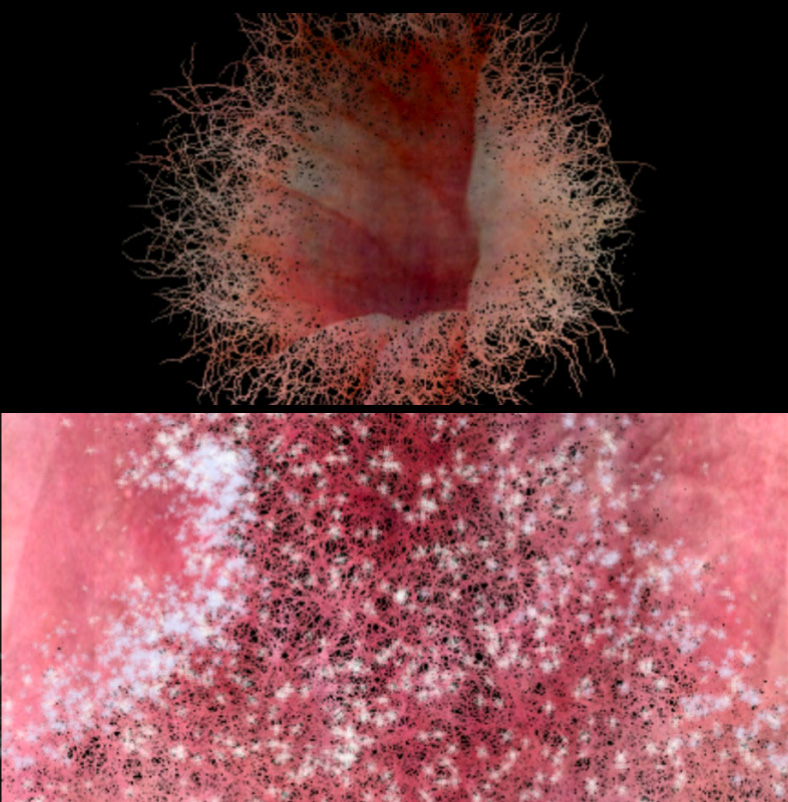
 Submissions,
Submissions,  nechvatal,
nechvatal,  occupennial,
occupennial,  occupy wall street in
occupy wall street in  submissions
submissions OCCUPY THE CULTURE
 Tuesday, October 11, 2011 at 12:34AM
Tuesday, October 11, 2011 at 12:34AM Jason Flores-Williams will be in NYC this week doing occupant interventions, including a reading at Bowery Poetry Club & Cafe. Here's an excerpt from the text Jason will be reading from (originally published in Brooklyn Rail):
Now here was the vision: truth has a way of being relentless. Truth has a way of refusing to die. There will be many people who read this and see it as an overly sincere and melodramatic piece of crap, but there are those who will recognize it as one loser’s agonized attempt to get at the heart of the matter. And for those people, i.e. you and me, this game isn’t over. You can say that truth is going to use us for something, or maybe we’re braver than we think we are, or maybe that the bullshit volume of misery is going to get turned up so high that ultimately we’ll have no choice but to say fuck it and take a stand, but something is going to happen here. We will not go gently. I can see it in the eyes and on the faces: the desperate realization that five years of something beautiful is infinitely better than 30 more years of lies. We may go down, but we will go down swinging. The final act of this generation has yet to be staged.
The reading is from 3 to 4 pm this Sunday the 16th of October, and will also feature Ted Hamm, editor of Brooklyn Rail, and the Occupennial's Paul McLean.
"Jason Flores-Williams is a literary force of a nature...A train wreck of genius." San Francisco Chronicle.
"Jason Flores-Williams is the king of American protest literature." The Yellow Rake.
 events,
events,  occupennial,
occupennial,  occupy wall street,
occupy wall street,  poetry in
poetry in  events,
events,  readings
readings “Smash the Bull, Distribute the Candy”
 Monday, October 10, 2011 at 11:46PM
Monday, October 10, 2011 at 11:46PM 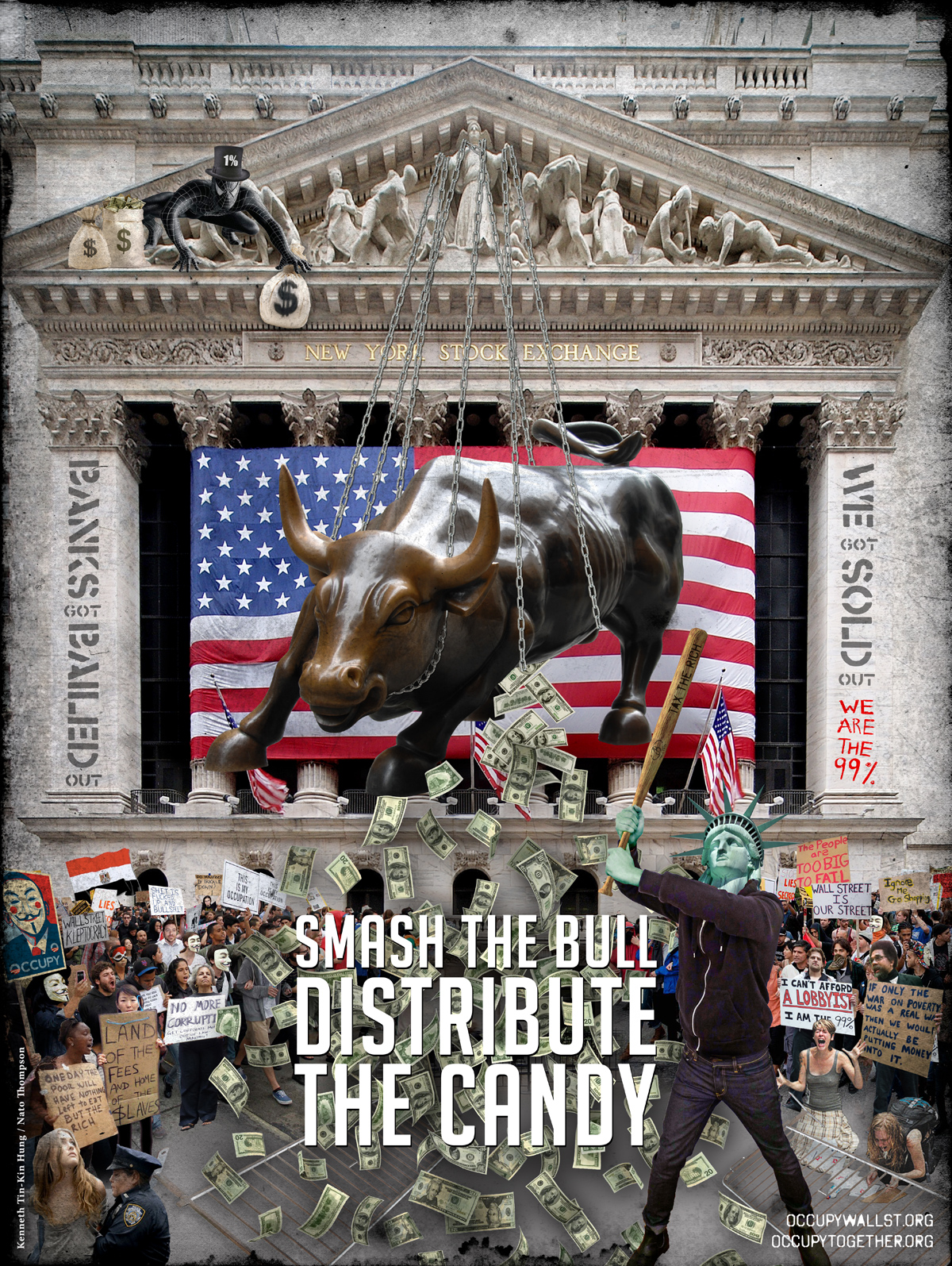
From Kenneth Tin-Kin Hung:
“Smash the Bull, Distribute the Candy”
An email exchange with Creative Time’s Nato Thompson, regarding the Occupy Wall Street movement resulted in this image. Please feel free to download, distribute and remix the image in any form you like.
Here is a brief description of the piece:
“The Charging Bull sculpture” by Arturo Di Modica is suspended in the air by iron chains. The chains are held by the work, “Integrity Protecting the Works of Man”, a high-relief sculpture placed atop the front of the NYSE building by John Quincy Adams Ward with the collaboration of Paul Wayland Bartlett, and carved by the Piccirilli Brothers.
Lady Liberty is dressed as a commoner and swinging a “Tax the Rich” baseball bat, smashing the Charging Bull in order to redistribute the cash it has been holding. Meanwhile, Occupy Wall Street protesters are watching the action while Black Spiderman, donning a 1% labeled top hat, is observing the revolution.
Several sizes of the poster are available for download:
* Original: 18 in x 24 in (with 1/8″ bleed), 300 dpi (18mb)
* Large: 12in x 15.95 in, 300 dpi (9.1mb)
* Medium: 8.28 in x 11 in, , 300dpi, fit in a Letter Size Paper(4.9mb)
* Online: 1200 px x 1595 px, 72 dpi
Thank You for the Occupiers in demonstrating the truest form of democracy! Power to the People!
[Click HERE to visit Kenneth's site an download the poster.]
 POSTERS,
POSTERS,  occupennial,
occupennial,  occupy wall street in
occupy wall street in  graphics
graphics NY Arts Magazine requesting contributions for a special OWS edition
 Monday, October 10, 2011 at 03:42PM
Monday, October 10, 2011 at 03:42PM NY Arts Magazine will be publishing a small newspaper (approx 15 pages) that will cover various perspectives on this momentous event. We are seeking editorial contributions from artists, journalists, critics, and writers of all backgrounds for this issue. There is no required length: all written contributions are welcome including, articles, poems, cartoons and original artwork/photographs. Submitted work can be an already existing article or poem or something new.
In order to publish the paper we will need your submissions as soon as possible: within the next 48 hours.
Please contact Rosanna as soon as possible for confirmation, by sending an email to intern.nyartsmagazine@gmail.com.
No Comment and Strong Decisions - Artists Occupy Wall Street
 Monday, October 10, 2011 at 12:11PM
Monday, October 10, 2011 at 12:11PM [Originally published on Huffington Post HERE.]
BY CATHERINE SPAETH
On Saturday night I attended the exhibit No Comment, held in what used to be the offices of JP Morgan, located on Wall Street. For blocks around, the police had barricaded the sidewalks, and so getting there was a roundabout effort. Perhaps for this reason there was not a crowd, maybe only a few more than a dozen hanging around outside the door; one of which was a woman having her body painted from head to toe -- inside I later saw her posing her body on a sphere, not far from a fellow making giant soap bubbles.
My self-assigned job was to take a picture of one thing interesting. There were only these few hours, and I assumed the artists would likely be people that I had never heard of, or at least not recognizable to me, and that if I took a picture it would at least be a place to begin. Perhaps I was drawn to the discursive commentary that on the face of it this work provides, I'm not sure, but in what follows below are the photos that I took, in order, of a single work.
 Abraham Lubelski, 250,000 works on paper, 1991-present
Abraham Lubelski, 250,000 works on paper, 1991-present
It was not until I got home and did some research that I had any idea at all who the artist was. I discovered that in the late '60s Abraham Lubelski exhibited at the now closed Chelsea National Bank a piece called Paper Money Made Into Art You Can Bank On.
This was $250,000.00 in bills tied up in bales and displayed in the bank itself, on exhibit for five days and costing the artist $300.00 in interest. It is difficult to imagine the effect of this piece, exhibited in the bank and visible only to those who are banking. An amused and coveting desire? Fear for one's safety?
More legible might be that the installation of 250,000 drawings pictured here was also in the previous exhibit in the JP Morgan building, XI/II: A Tribute to 9/11. In that context -- the same space, same installation, just prior to No Comment -- the drawings were being offered for free. And so there is an economy of the gift, drawing on the by now well worn motif of papers drifting down the streets of New York. Themed on 9/11 the original exhibit was intended for those who work in the financial district of New York -- that would be the top one percent. For a long time now much of the artworld has been pitching its wares to, if not actively run by, the "non-profiteering" pump and dump collectors who are the one percent. Because of its location, this exhibit was one of them.
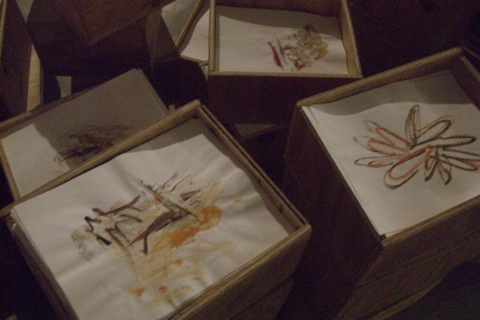
A significant difference between the previous installation and the current one, however, is that in No Comment there is a suggested donation of $30 for each drawing. Granted, the first exhibit lost some money because of the demonstrations, and has since tried to collaborate with artists of Occupy Wall Street in order to recover their losses and to provide a space for activist artists to show their work, and studio space to make it. I don't close out the thought that this can be a beneficial relationship, but it should not be an uncritical one. For example, in a public forum about the upcoming exhibit "Aristedes" writes of the No Comment auction as "A Landmark, Historic, most important ART AUCTION of the year!... This show will be remembered for years into the future & can only grow in stature!." But the auction is where the power of the one per centers lies -- a price at auction is now all it takes to count as art history in that art world.
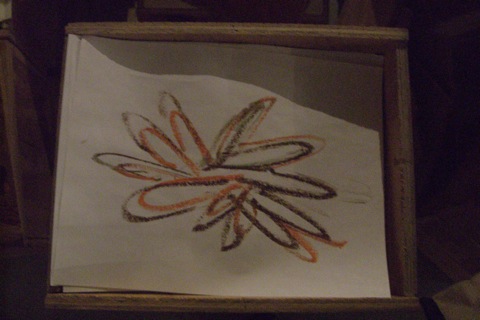
With regard to 250,000 Drawings, two different things occur that strongly effect the speculative value of art: first, there is an easy art historical narrative ready to hand, and second, there is in this as well an appreciation of the hand made, and of free-hand drawing in particular as an expressive freedom. These appeal to both the discursive side and that of the immersive direct experience, and that there is excessive and measurable labor involved (250,000) underscores the surplus value of both. In On (Surplus) Value in Art Diedrich Diederichsen explains that these two sides are dependent on one another in the current art market. The art world has come to depend on anecdotes and punch lines in its discourse, a discourse that keeps things moving, however more sales will occur of works that require no justification. He writes:
Of course, all of the works of this type -- the ones that require no justification -- are actually indirectly justified by other art works. They are, as it were, instances of a legitimation that has congealed and become unobtrusive. They are able to forego justifications and give off the heavy scent of immanence, in which the business of art is so fond of steeping... It is works of this kind that finance the everyday operations of the art industry. They circulate throughout the world, and images of them fill the catalogues and art magazines. Yet it is only works of the first type - those that are openly in need of legitimation -- that keep the discourse alive.*
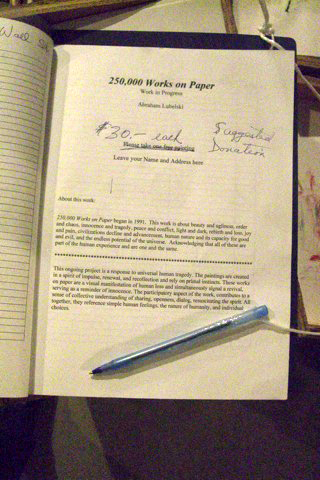
Given this dependence of objects that ask for no justification upon the discursive works that keep things mobilizing, most interesting of all is that Abraham Lubelski is the owner of a number of arts enterprises, among them NY Arts Magazine and the Broadway Gallery, a magazine and a gallery enterprise where writers are unpaid and artists are aggressively solicited to pay to play. Vanity galleries are less known for sales and cultivating a reputation than for the amount of artists swinging through the doors, that is where the money is for them. There are many discontented artists describing these practices on websites. More favorable and by one of his own past writers, Charles Giuliano writes that upon inviting Lubelski to the New England School of Art and Design at Suffolk University to exhibit, Lubelski was not forthcoming as to what this might be and only shortly beforehand gave him the title, The Show Has Been Cancelled, for a piece in which the artist sat on a sofa and chatted people up. Writes Giuliano:
So I view him as the Pied Piper of the art world. Luring us out of the city while dancing to his merry tune. Leading us on to what and where? It is about desperation, the need to be loved and accepted. To get published, seen, endorsed and recognized. Abraham is a conveyor of hope for many. With him anything is possible. He says, "I keep trying, putting ideas out there, engaging in dialogue."
And so we have some pictures of a single work, and some information surrounding it. I know very little and yet what investigating this one object suggests to me is that how artists participate in institutional spaces -- as artists -- and who they share it with might be more important than the artists of Occupy Wall Street seem at this point -- in inclusiveness, the defense of free speech, and desire for visibility -- ready to make any strong decisions about. Coverage such as the recent New York Times post is valuable for drawing attention to the spatial detournement of occupying J.P Morgan, but it seems to me that there is more at stake than symbolic space. Abraham Lubelski has now begun an fundraising exhibit to raise funds for Occupy Wall Street, at his Broadway Gallery. More and more "artist activist entrepreneurs" are arriving on the scene, here for example is a link to Revolution Art Magazine, complete with pinups and product. The question of art and money as it relates to Wall Street has been haunting the art world for some time now -- what "alternatives" are you willing to settle for?
* Diedrich Diederichsen, On (Surplus) Value in Art, Reflections 01, Sternberg Press and Witte de With Publishers, 2011, p. 29.
 occupennial,
occupennial,  occupy wall street,
occupy wall street,  press in
press in  press,
press,  satellite shows
satellite shows The Skadden Protest - The Beef
 Sunday, October 9, 2011 at 05:30PM
Sunday, October 9, 2011 at 05:30PM Your Name: Jason Flores-Williams
Your Email: Jasonflores_williams@hotmail.com
Subject: The Skadden Protest - The Beef
Message: Hi - I'm seeking artists to help me with visuals on this. Thanks, Jason
I'm closing down the law firm here in Santa Fe for a week and flying out to NYC on Thursday the 13th to sleep five days at Z park and write about Occupy Wall Street for the Brooklyn Rail.
I won't describe the following as a "protest" as much as it is a Personal Beef. But it's got to get done. Basically, we're gonna get it on cuz we don't get along.
The one group that's gotten a free pass in all of this is the corporate lawyers. These bastards made billions of dollars in billable hours off the direct infliction on pain, suffering and humiliation of the middle classes and the working poor. These guys were the true bullies. I saw it day after day in court - these lawyers pounding people into the ground with incompreheinsible motions, arguments, legal tricks without any concern for the ethics, morality or basic human decency. They were arrogant while they took people's homes, destroyed families and ripped apart lives. I wrote an article about it that ran here in SF and in the Rail and in a couple other spots:
http://www.santafenewmexican.com/LocalColumnsViewpoints/My-View--Jason-Flores-Williams-Law-firms-took-advantage-of-hous
And of all the law firms in American who act as the thug enforcers for Wall Street, it is Skadden Arps in Manhattan that is the ne plus ultra of nerd bullydom. I have friends from law school who work there who are nice people one on one, but who in the end are part of a legal machine that destroys human beings and maintains a system of sickening injustice.
I have duked it out with these bastards again and again, trying to keep people from being thrown out onto the streets. But in the end, when BofA is paying these guys $650 an hour to drown the court in paperwork and I'm standing there for free, there's just no way to keep up. It's starting off the game down 55 to nothing.
So, on Friday the 14th at 11:00 am, I am going to the Skadden Arps headquarters in Times Square and let me them know that one little small timer from NM knows how disgusting they are. I'm going to read a variation of that piece, another piece, and then deliver the closing argument that I always wanted to hit them with, but could never get to because they would always win on procedural grounds and summary judgment. I'm going to stand in front of their main doors and let them have it, then get back to Z Park. Here's where they are:
http://www.skadden.com/index.cfm?contentID=49&officeID=1
If you can make it, it's always better to be with people - and we'll go for scones after.
Jason Flores-Williams, Esq.
Nb. I wrote this in the past tense, but the foreclosures and insane debt collections and law suits for attorneys fees are happening with even greater ferocity today.
Brian Holmes at #OWS and 16 Beaver St.
 Saturday, October 8, 2011 at 12:31PM
Saturday, October 8, 2011 at 12:31PM Sunday -- 10.09.11 -- Notes on Three Crises -- Brian Holmes
CONTENTS:
1. About this Sunday
2. Three Crises: 30s-70s-Today : the Concept
3. Three Crises: 30s-70s-Today : Chicago Sessions
4. Some questions to discuss on Sunday
5. Links
__________________________________________________
1. About this Sunday
What: Three Crises Notes
When: Sunday -- 10.09.11 @ 8:00PM
Where: 16 Beaver Street, 4th Floor
Who: Free and open to all
On Saturday 10.08.11 evening at 6pm. Brian Holmes will be giving a talk at Liberty Park on "The End of the Financial Mind and the Transformation of Global Class Structure."
We would like to invite you the following night (Sunday) to 16 Beaver. Since our last conversation this summer, we have been contemplating to organize an intensive meeting together with Brian related to three historic crises. In the 30s, the 70s and today.
So much of this work Brian has been doing is precisely to understand the crises in our midst and the challenges it poses on the level of organizing ourselves to combat them.
The aim is to take a closer look at two turning points of economic and social history, to find out where we’ve been and what we have become as the United States and the world traverse a third major crisis. To grasp what’s happening before our eyes, and to gain some influence over the new forms of society that will emerge over the next decade.
We would like to take the occasion of his presence here in New York to think together this possibility in the form of an open discussion.
Below, we have some basic outline of the seminar he has been organizing with friends in Chicago at Mess Hall.
We will begin the evening in the structure of questions and answers. We formulated some questions below, which Brian will try to address directly, after which we can open up to a common conversation and touch more closely issues related to the occupation and the challenges for this movement.
__________________________________________________
2. Three Crises: 30s-70s-Today : the Concept
The development of capitalism is marked, every thirty or forty years, by the eruption of extended economic crises that restructure the entire system in organizational, technological, financial and geopolitical terms, while also affecting daily life and commonly held values and attitudes. In the course of these crises, conditions of exploitation and domination are challenged by grassroots and anti-systemic movements, with major opportunities for positive change. However, each historical crisis has also elicited an elite response, stabilizing the worldwide capitalist system on the basis of a new integration/repression of classes, interest groups, genders and minority populations (whose definition, composition and character also change with the times). In the United States, because of its leading position within twentieth-century capitalism, the domestic resolution of each of the previous two crises has helped to restructure not only national social relations, but also the international political-economic order. And each time, progressive demands that emerged from the crisis period have been transformed into ideologies covering a new structure of inequality and oppression. By examining the crises of the 1930s and the 1970s along with the top-down responses and the resulting hegemonic compromises, we will cut through the inherited ideological confusions, gain insight into our own positions within neoliberal society, identify the elite projects on the horizon and begin to formulate our own possible agency during the upcoming period of instability and chaos.
__________________________________________________
3. Some questions to discuss on Sunday
1. What brought you thinking about these crises?
2. What is a common ground between the three?
3. What distinguishes the current one we are living through?
4. The question of forms of resistance and organization and of conflictual interests also come to the fore. Has your research also delved into the processes of resistance in these prior crises?
5. If some contours emerge in this archeology of the last crises, what kind of problems become discernible for social movements?
6. There is a geneological moment in every archeological effort, putting the subjugated knowledges into play, in a contemporary light. Given this molecular process unfolding in our midst, could the work you are doing cast a light for the kinds of work that will need to be done for this resistance not to suffer the same fate as in the 70's which gave rise to neoliberalism?
7. In a recent text about the contemporary crisis, by Michael Hardt entitled 'The Two Faces of the Apocalypse', he plots out the centrality of the commons, both in an ecological sense and in terms of production in a post-fordist society today. And there he also outlines some of the commonalities and antinomies between these movements. And one of these antinomies returns to the question of organization. On the one hand, the urgencies confronted by ecological ruin, require urgent action, which could be facilitated by larger forms of organization. On the other, so much of the anti-capitalist struggle for the social-economic commons has struggled for a basic change in the forms of organization. And forms like the general assembly that is being experimented with in wall street or various councils formed in the context of the north african revolts, require time, are slow, and work best when smaller, more accountable, and direct. Can our urgent questions be addressed without sacrificing the necessary struggles for autonomy and greater self-organization? Can we avert a capitalist or statist appropriation of the discourse around and struggle for the dual senses of commons?
__________________________________________________
4. Three Crises: 30s-70s-Today : Chicago Sessions
Description of the sessions from the self-organized seminar at Mess Hall in Chicago
1. Introduction: technopolitical paradigms, crisis, and the formation of new hegemonies.
We begin with a theoretical look at more-or-less coherent periods of capitalist development, known as technopolitical paradigms. During twenty to thirty-year periods, technologies, organizational forms, national institutions and global economic and military agreements all find a working fit that allows for growth and expansion, up to a limit-point where the paradigm begins to encounter conditions of stagnation, internal contradiction and increasing crisis. Autonomist Marxism helps us understand the dynamics of grassroots protagonism during the crisis periods. To grasp the mechanisms whereby systemic order is recreated, we turn to Antonio Gramsci’s notion of hegemony as the construction of a set of discourses and practices that can articulate the behaviors of diverse classes and interest groups, in order to secure their consent to a new social hierarchy. The ingredients of a hegemony are moral, aesthetic, philosophical and epistemological; but these abstract categories of thought and imagination soon become intertwined with economic practices and institutional forms. Hegemony is the force of desire and belief that knits a paradigm together and sustains it despite manifest injustices.
2.Working-class movements and the socialist challenge during the Great Depression.
This session describes the emergence of Fordist-Taylorist mass production in the United States, then turns to economic and geopolitical conditions following the Crash of ‘29. We follow the interaction between labor movements and socialist/communist doctrines, while examining the major institutional innovations of the Roosevelt administration. Can the 1930s be understood as a “regulation crisis” of assembly-line mass production? What are the forces that provoked the crisis? Has the “New Deal” become an idealized figure of class compromise for succeeding generations? What does it cover over?
3. The Council on Foreign Relations during WWII and the US version of Keynesian Fordism.
Only after 1938 was the economic crisis resolved through the state orchestration of innovation and production, effected by wartime institutions. Corporate leaders from the Council on Foreign Relations were directly inducted to the Roosevelt government and planned the postwar monetary and free-trade order enshrined in the Bretton-Woods agreements. How was the intense labor militancy of the 1930s absorbed into the Cold War domestic balance? To what extent did the American experience shape the industrial boom in the Keynesian social democracies of Western Europe and Japan? How were the industrial welfare states supported and enabled by neocolonial trade relations and resource extraction?
4. The ‘60s revolts, Third-World self-assertion, stagflation and the monetary chaos of the ‘70s.
The brief convergence of labor movements, student revolts and minority rights campaigns in 1968 was a global phenomenon, spurred on by Third World liberation and the struggle in Vietnam. Wildcat strikes, entitlement claims and the political imposition of higher resource prices (notably by OPEC) were all key factors in the long stagnation of the 1970s. We examine the breakdown of Bretton-Woods and the conquest of relative autonomy by Western Europe and Japan, along with the Third World push for a New International Economic Order. Does the US internalize global economic and social contradictions during this period? Which aspects of the social and cultural revolts posed real obstacles to the existing economic structure? Which ones became raw materials for the formation of a new hegemonic compromise?
5. The Trilateral Commission and the transnational hegemony of Neoliberal Informationalism.
The launch of the Trilateral Commission by Nelson Rockefeller and Zbigniew Brzezinski in 1973 is an elite response to the crisis, with concrete political effects: some twenty members of the Commission were named to the Carter administration in 1976. During the decade the coming of “postindustrial society” was announced by sociology, while technoscientific innovations like the microprocessor went into production. Cooperation among trilateral elites was paralleled by financialization, the rise of networks, the creation of transnational futures and options exchanges, etc. However, the Treasury-induced US recession of 1980-82, the “Star Wars” military buildup and the emergence of a new innovation system are specifically American contributions to the new technopolitical paradigm that takes shape in the US in the 1980s, before going global after 1989. What are the defining features of Neoliberal Informationalism? Who are its beneficiaries – and losers? How is the geography of capitalist accumulation transformed by the new hegemony? What sort of commodity is transmitted over the electronic networks? And what does it mean to be a consenting “citizen” of the trilateral state-system?
6. BRIC countries, counter-globalization, Latin American and Middle Eastern social movements.
With the breakdown of the USSR in 1989, followed by the first Gulf War, the world-space is opened up for transformation by the trilateral economic system. The 1990s witnesses the largest capitalist expansion since the postwar industrial boom. It was supposed to be the “end of history” and the universal triumph of liberal democracy – but that soon hit the dustbin. After tracking the expansion of trilateral capitalism we focus on the economic rise of the Gulf states and the BRIC countries (Brazil, Russia, India, China), as well as the political currents of the counter-globalization movements, Salafi Jihad, Latin American Leftism and finally, the Arab Springtime. Do these diverse economic and political assertions mark the end of the trilateral hegemony and the reemergence of a multipolar order?
7. Financial crisis, climate change and elite attempts to stabilize Neoliberal Informationalism.
Here we will examine the inherently volatile dynamics of the informational economy, culminating in the Asian crisis of 1997-98, the dot-com bust of 2000 and finally, the credit crunch of 2008 and the ongoing fiscal crisis of the neoliberal state. Little has been done in the United States to control financial capital, but the debt crisis has massively punished the lower ranks of society and seriously eroded the status of the middle classes, with a major attack on the public university system and a move to cut all remaining welfare-state entitlements. What is the significance of the bailout programs? How have the European Union and Japan faced the crisis? What paths have been taken by the Gulf states, and above all, by China? Do we see the beginnings of new alliances among international elites, outside the traditional arenas of trilateral negotiation?
8. Perspectives for egalitarian and ecological social change in the upcoming decade.
In the absence of meaningful reform and redistribution, continued financial turmoil appears certain, along with a reorganization of the monetary-military order. Meanwhile, climate change is already upon us, advancing much faster than previously anticipated. The result of all this is unlikely to be business as usual. What we face is a triple crisis, economic, geopolitical and ecological, with consequences that cannot be predicted on the basis of past experience. Can we identify some of the central contradictions that will mark the upcoming years? Which institutions and social bargains have already come under severe stress? In what ways will the ecological crisis begin to produce political responses? How will class relations within the United States interact with crossborder and worldwide struggles? Is it possible to imagine a positive transformation of the current technopolitical paradigm?
__________________________________________________
5. Links
The Three Crises Seminar at Mess Hall has further readings, texts and recordings.
http://messhall.org/?page_id=771
__________________________________________________
16 Beaver Group
16 Beaver Street, 4th fl.
New York, NY 10004
for directions/subscriptions/info visit:
http://www.16beavergroup.org
TRAINS:
4,5 Bowling Green
R,W Whitehall
2,3 Wall Street
J,M Broad Street
1,9 South Ferry
 brian holmes,
brian holmes,  occupennial,
occupennial,  occupy wall street,
occupy wall street,  speakers in
speakers in  activism,
activism,  events
events OCCUPY AMERICA
 Friday, October 7, 2011 at 08:58PM
Friday, October 7, 2011 at 08:58PM 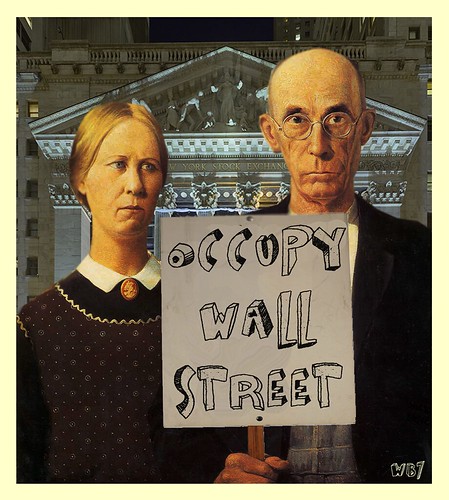
OCCUPY NYSE by Colonel Flick
[From Colonel Flick's "Occupy America" photoset on Flickr]:
Dear Fellow American,
I am writing this letter to you not as a liberal, not as a conservative; not as a lefty, not as a righty; not as a Democrat, not as a Republican, not as a Tea Party populist; not as a Christian, not as a Buddist, not as a Moslem, not as an atheist; not as a socialist, a communist and certainly not as a bailout capitalist.
I am writing to you as just another ordinary American.
I'm your next door neighbor, I'm the guy standing next to you at the check out counter, I sit next to you on the bus, I sit next to you at worship, I'm in the next lane over on the freeway, we see each other at work, I'm right behind you at the cinema and three rows over at the ball game, our kids go to school together. We stare blankly at each other each and every day, but we rarely if ever exchange a word.
Today, I have something important I would like to say to you.
In these twilit days of Indian Summer, as we watch the so called "power elite" luxuriating in their billionaire beach hideaways, at their billionaire birthday parties, political golf outings, fund raisers and PhD cowboy retreats, I keep asking myself one simple question.
I'm pretty sure you are asking yourself the same question as well. That question is written all over the worried faces of millions of struggling Americans trying to live a modest life within their modest means.
It is written on the faces of the unemployed struggling to pay their bills. It is written on the faces of young adults despondent over their prospect of living under the shadow of runaway debts. It is written on the faces of children living in homeless shelters, it is written on the faces of struggling entrepreneurs who can't get a loan, it is written on the faces of all of those frustrated working and out of work people who once had a simple American dream.
Everywhere I look, I see the same question.
Unfortunately, I don't see any answers.
All I see is self serving corruption, greed, stupidity, short sightedness and outright thievery by the parasites and leeches that would have us look upon them as our grand leaders and paragons of commerce.
They ask and take, they take and complain, then they give precious little or nothing in return.
They blather endless platitudes about what's good for them, then pay feeble lip service to what is good for the rest of us. Their idea of a free market is that of justice and prosperity to the highest bidder.
They are good at one thing and one thing only, preserving their own status quo by exploiting you, me and the rest of us.
They are callous human strip miners and care absolutely nothing about anything but their own fat cat bank accounts, fat cat sports cars, fat cat jets, fat cat hideaways, fat cat trophy wives, fat cat mistresses, fat cat country clubs and gold plated suntans.
The question I want to ask you is this: Why?
Why is it taking so long for all of us to look each other in the eye and finally say what finally needs to be said?
Those selfish crooked liars and thieves on Wall Street in collaboration with their hired guns and bought politicians in Washington DC have taken over the town. They are down in the Silver Dollar saloon whoring themselves at a big old drunken Wall Street party while the rest of us are quietly cowering in the miserable shadows of Everywhere USA.
Why are we waiting to speak out, to act, to do what is necessary to protect our families, our children, our grand children and our country, yes OUR country, from those Capital Hill bandits, corporate horse thieves and fast buck bankster snake oil artists?
It is time to take back the neighborhood we call USA. It is time to haul the thieves and swindlers responsible for the mother of all economic clusterfucks before the court of public justice.
Let them call us populists. Whatever. I'll gladly wear that badge if that is what it takes to set things right.
I know you are busy so I won't take more of your time. All I ask is you consider what I have said and how it relates to you, your friends family and loved ones.
I for one am not going to take it lying down.
The sooner we all stand up and openly say enough is finally enough, the better we will all be.
Yours sincerely,
WilliamBanzai7
 Submissions,
Submissions,  occupennial,
occupennial,  occupy wall street in
occupy wall street in  submissions
submissions  Friday, October 7, 2011 at 05:47PM
Friday, October 7, 2011 at 05:47PM {From DanieARTS [daniele.kohn@gmail.com]}
[posted Friday, October 7 at 12:08PM from Alejandre]
I need:
- 5 volunteers this afternoon, 5 tomorrow morning, and 5 tomorrow afternoon.
- Tomorrow from 6-9 we need another few volunteers (any sort of experience is probably fine)
- and then we need volunteers for clean up, SUNDAY, beginning at NOON. (any types)
[Contact the DanieARTS directly at the email provided above]
Update: LAF/#OWS/Occupennial
 Friday, October 7, 2011 at 05:43PM
Friday, October 7, 2011 at 05:43PM [From Sally]
...
Ok, more soon!
 living as form,
living as form,  occupennial,
occupennial,  occupy wall street in
occupy wall street in  interventions
interventions Press Release for "No Comment"
 Friday, October 7, 2011 at 05:39PM
Friday, October 7, 2011 at 05:39PM [From Alejandre]
No Comment
a collaboration between
Loft in the Red Zone and Occupy Wall Street
23 Wall Street
Saturday, October 8th, 6-9 PM
nocommentartpr@gmail.com
One month ago, the first floor of the JP Morgan building was converted into a gallery space for Loft in the Red Zone, a 9/11 memorial show. Soon after its opening, Occupy Wall Street protestors rallied outside its doors and in Liberty Plaza, immediately changing the tone of Wall Street and Broad. History was and is manifesting outside, through marches, assemblies, and confrontations with the police, and as it became clear that a shift in consciousness and public empowerment was awakening in the streets, the gallery hurried to collaborate with protest organizers in a new art exhibition. Loft in the Red Zone is proud to welcome No Comment, what is hoped to be the first of many reactionary art events throughout New York City.
No Comment aims to expand the conversations taking place over the internet and in Zuccotti Park. The location on Wall Street, directly across from the New York Stock Exchange, is a symbolic realization of the Occupy Wall Street slogan “Wall Street is our street.” In the spirit of inclusivity that characterizes the movement, the show welcomes a range of works, from protest signage to pieces by established gallery artists. The exhibition’s goal is to present an open forum for an extensive range of relevant visual communication.
Works include video, interactive installation, photography, performance, sculpture, prints, and paintings, some of which were born of the movement, others which represent the uproar of the 99 percent. Graffitied murals will be displayed within the gallery and actively used in protests.
No Comment is a not-for-profit, one-night-only exhibition. Many of the works are donated, and allproceeds will be allocated to Loft in the Red Zone, Occupy Wall Street, and TheFeelGood Foundation. A silent auction will be held on Saturday evening, and the show will be open Saturday evening, from 6-9 PM.
